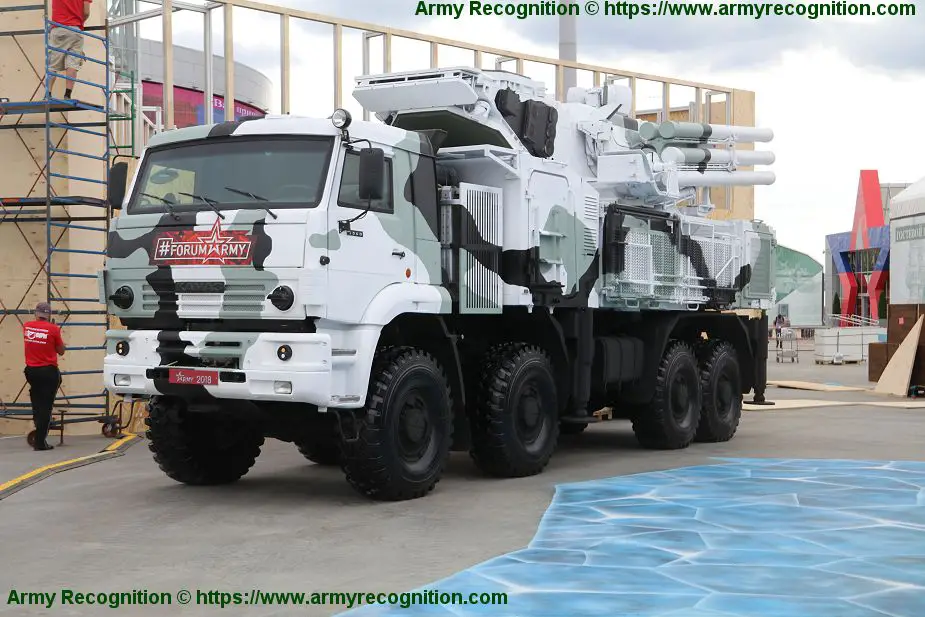The 414th antiaircraft regiment went on combat duty in April 2020. It looks like a usual event, as several dozen antiaircraft regiments have been formed in Russia of late. However, the new regiment is deployed in Tiksi-3 settlement in Yakutia and is armed with S-300PS missile launchers. It considerably changes the balance of forces in the region, the Independent Military Review writes.

Russian army Pantsir-S2 short-range air defense system in Arctic color camouflage at Army defense exhibition near Moscow, August 2018. (Picture source Army Recognition)
Russia has been building up its air defense in the Arctic since 2016. It deployed an air defense division there and is creating another formation. Pantsir batteries were included into each military base in the Arctic islands. S-350 Vityaz latest air defense launchers are soon to appear in the Arctic.
How is the Russian Arctic air defense organized and which missions can it fulfill? Yet in the early 1950s the Soviet Union paid major attention to Arctic air defense, as it expected US strategic bombers with nuclear weapons to break through the region. In 1954, the Belomorsky air defense corps was formed followed by the Northern air defense army four years later. It was later renamed into the 10th air defense army.
In 2017, the Pentagon declassified the documents of the Strategic Command of 1950-1960s, in particular, the plans of massive strikes at the USSR, China and Warsaw Treaty countries. Over two thousand aircraft had to be engaged and the main targets were Moscow and Leningrad. Strategic B-52 and B-47 bombers under the protection of F-101 fighter jets had to break through the Polar regions from Greenland and Alaska.
The Arctic threat increased after the US Air Force was armed with cruise missiles. In 1980s it got the missiles of AGM-86 family.
The missiles allowed the US military to effectively strike at strategic targets in Central Russia and the Urals through the northern direction. Together with Pershing intermediate-range missiles deployed in Europe, the USA received a possibility to deal a crushing blow to Soviet strategic forces.
In the late 1980s, the United States received a more dangerous airborne cruise missile. The stealth AGM-129 could destroy targets at a major distance.
air Is the Arctic still vital? In 2017, the Pentagon contracted the design of a new strategic cruise missile. The project was called the Long-Range Standoff Weapon (LRSW). In August 2017, US Air Force Secretary Heather Wilson said the missile would considerably expand the capabilities of the air component of the US nuclear triad.
In 2022, tender participants have to submit their projects to the military. The supplies of LRSW have to begin in 2026.
The US Air Force continues to operate in the Arctic. In August 2016, several B-52 and B-2 jointly with Canadian, Norwegian and Danish aircraft trained over the North Pole, Alaska, Northern Pacific and the North Sea during Polar Roar exercise. STRATCOM chief Admiral Cecil Haney said the exercise was necessary to maintain the capability to synchronize flight routes of over 5500 miles and train joint actions with NATO allies.














